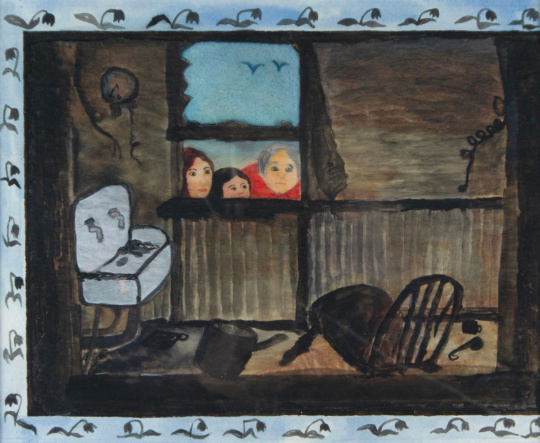Dodge & Burn is a column that allows resident guest curators to respond to and contextualize lens-based media and artists. Our current curator is Jill Frank, a photo-based artist who recently moved from Chicago to Atlanta.
Afterimages happen to us naturally – the lingering visual halo you cannot shake from an oncoming car using their high-beams; or the disorienting glow after a camera strobe flashes. Afterimages are an optical phenomena that creates a lasting visual impression on the retina once the original image has passed. For the past few years, artist AnnieLaurie Erickson has been building her own cameras, investigating ways to permanently fix an afterimage experience onto photographic material. Through collaborations and research, Erickson has developed different methods of emulating the human retina. The simplified version of her process: Erickson works with a special material that retains light information after the initial exposure of her subject; she allows this material to decay and then creates a secondary exposure of the decayed material onto color sheet film where it is made permanent.
Erickson is newcomer to the southeast, a recent transplant from Boston to New Orleans, where she heads Tulane’s photography department. Upon arrival to NOLA, Erickson was struck by the presence of the oil refineries across the landscape and has since been creating afterimages of refineries in Louisiana. In the works shown here, Erickson transforms the signature smoke stacks and towers into constellations of light, reminiscent of a Disney castle. While this process might distance viewers from the refineries as sites of process and production, Erickson is interested in their capacity to inform a perception of place. The refineries are a difficult subject matter; not only it is a federal offense to take a photograph of an oil refinery, but as sources for petroleum become increasingly scarce and refineries continue to emerge all over the world, there is an expectation of descriptiveness with such subject matter that the afterimages neutralize. Erickson’s treatment of the refineries seems to pacify desires for political analysis and encourage contemplation of the experience of viewing.
In addition to the refineries, Erickson is also creating afterimages of windows, harkening back to photography’s invention and the first successfully fixed image—View from the Window at Le Gras (La cour du domaine du Gras), by Nicéphore Niépce in 1826. Erickson says that her choice of subject matter and the labor-intensive process reveal an interest in the ways that photography can extend sight, and “point back to a sense of discovery.” These photographs have a similar presence to those of Carlo Van der Roer, created by his Portrait Machine, which uses polaroid film and electromagnetic readings in a reinvented version of spirit photography, similarly playing with the anticipation and excitement of early photographic invention. Erickson will be showing her work this summer at Antenna gallery in NOLA. BURNAWAY is presenting a preview of her works in progress.






AnnieLaurie’s most recent projects focus on exploring how photography and science are capable of showing us things that we couldn’t previously see. The work attempts to reinterpret the nature of sight through optical complication, represent the decay of vision through time, and address the visual world as illusory. She continues to pursue an interest in the construction and deconstruction of the visual world through an active studio practice in New Orleans.
Jill Frank is a visual artist working primarily in photography. She received her BA from Bard College, and her MFA from The School of the Art Institute of Chicago. Frank recently relocated from Chicago to Atlanta to teach photography full-time at Georgia State University.




